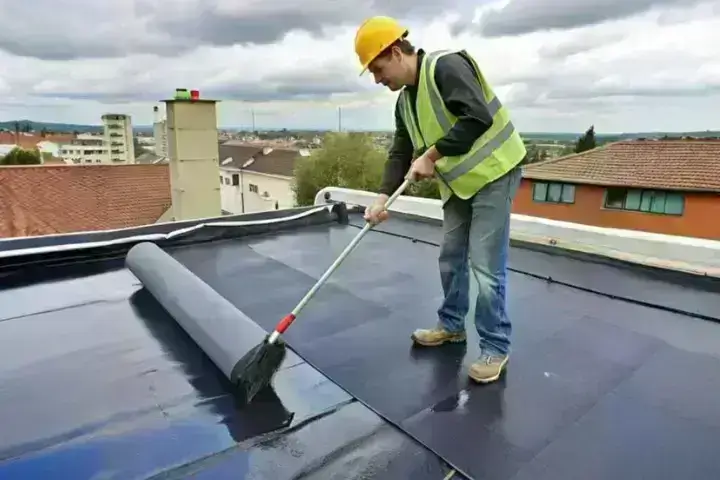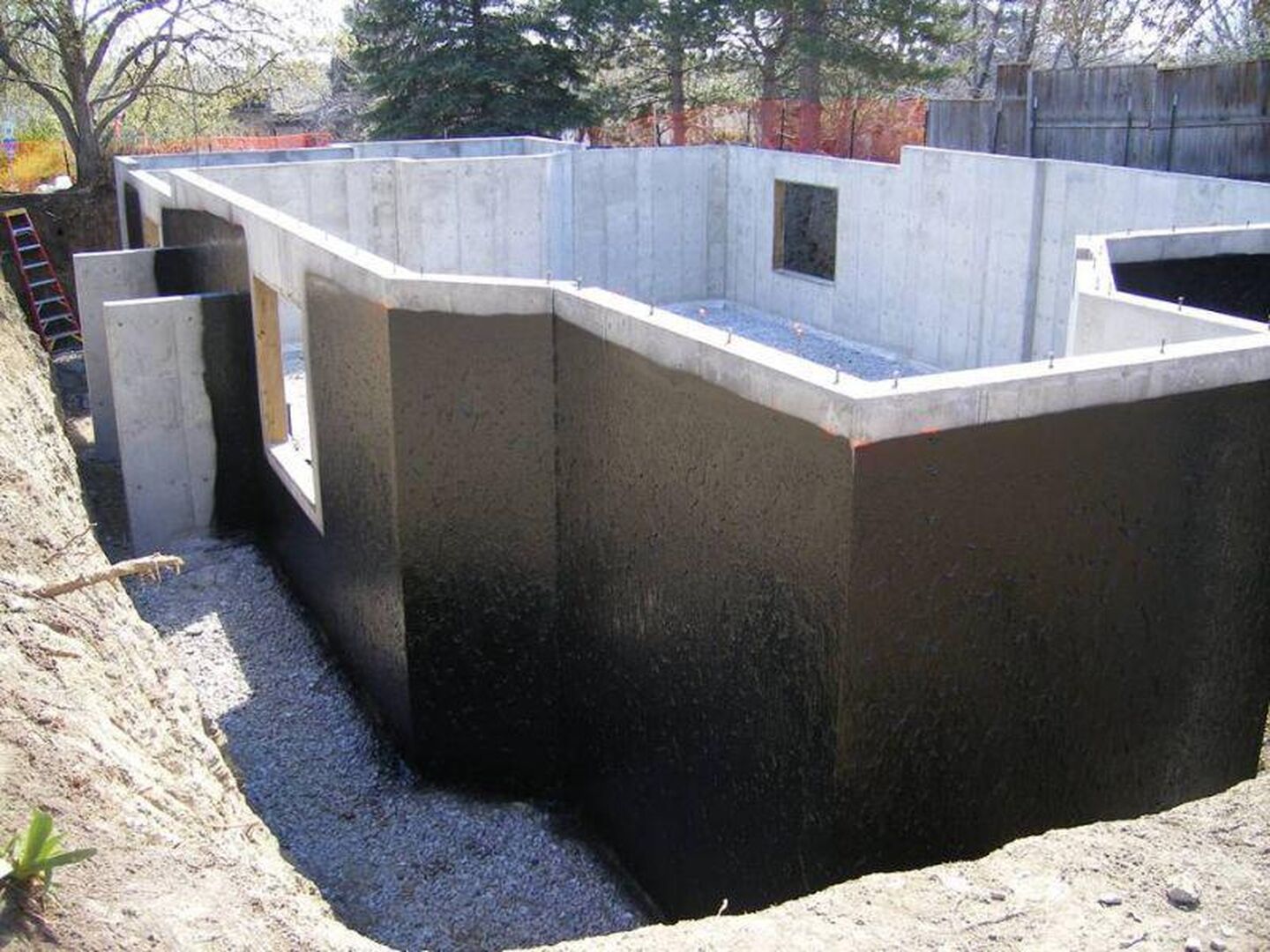Beginner’s Guide to French drain installation Omaha: Avoiding Mistakes
Wiki Article
Sorts of Waterproofing: Checking Out the Different Techniques and Their Applications
Waterproofing is a vital element of construction and upkeep. It shields frameworks from the detrimental effects of water damage. There are a number of approaches available, each with its special applications and advantages. From membrane layer systems to cementitious services, understanding these options is crucial for effective application. The choice of waterproofing technique can considerably influence resilience and longevity. Discovering these numerous strategies reveals their distinct benefits and possible challenges, prompting more factor to consider of optimal remedies.Membrane Layer Waterproofing Systems
Membrane layer waterproofing systems act as a crucial obstacle versus water intrusion in different structures. These systems typically are composed of slim sheets made from materials like rubber, polycarbonate, or asphalt, which are applied to surface areas to stop moisture penetration. They can be set up above or listed below grade and are especially efficient in areas vulnerable to high water exposure, such as basements, roof coverings, and foundations.The setup procedure includes cleansing the substratum, using adhesives or primers, and precisely suitable the membrane layer to ensure complete protection. Membrane layer systems can be either fully stuck, mechanically connected, or laid loose, depending on the certain requirements of the task. They provide longevity and adaptability, accommodating architectural motions without compromising their waterproofing capabilities. These systems can be strengthened with added layers for improved defense. Inevitably, membrane layer waterproofing systems are crucial for safeguarding structures against water damage and keeping lasting stability.Liquid-Applied Waterproofing Coatings
Liquid-applied waterproofing coverings provide a versatile remedy for securing surfaces from water infiltration - Sump pump discharge drainage Omaha. These coverings include liquid materials that, when applied, form a seamless, versatile membrane layer. Their versatility permits application on different substratums, including concrete, metal, and wood. The layers can be used in diverse atmospheres, from residential to industrial settings, making them appropriate for roof coverings, foundations, and below-grade structures.One considerable benefit of liquid-applied finishes is their capability to comply with irregular forms and pass through fractures, creating a robust obstacle against dampness. They frequently show excellent attachment properties and resistance to UV radiation, making sure durability and resilience. Furthermore, the application process is generally uncomplicated, enabling quick installment and minimized labor prices. This technique also decreases the threat of water pooling, as the constant layer properly routes water away from susceptible locations. Generally, liquid-applied waterproofing coverings are a reliable choice for thorough water securityCementitious Waterproofing Solutions

Cementitious waterproofing services use a durable choice for structures requiring reputable moisture protection. These systems mainly make use of a mix of concrete, sand, and chemical additives to create a water resistant obstacle. They are commonly put on surfaces such as concrete walls, foundations, and floors, giving a durable, durable defense against water intrusion.One of the vital advantages of cementitious waterproofing is its ease of application; it can be applied utilizing a brush, roller, or spray, making it ideal for different job dimensions. In addition, this method works with several surfaces and can usually be used combined with other waterproofing techniques.Cementitious services are especially reliable in atmospheres where water exposure is a worry, such as basements or below-grade frameworks. Their excellent bond properties ensure that they bond well with substrates, supplying a strong and nonporous layer versus moisture infiltration.
Bentonite Waterproofing
Bentonite waterproofing is an extremely efficient approach that uses sodium bentonite clay to develop a natural barrier versus water. This strategy manipulates the unique properties of bentonite, which broadens upon contact with water, sealing any potential leakages and protecting against dampness seepage. It is frequently made use of in numerous applications, consisting of structure walls, passages, and preserving wall surfaces, where water resistance is essential.Bentonite can be applied in several forms, such as panels or blankets, offering adaptability in installment. Its capability to self-seal makes it an eye-catching alternative for locations subject to changing dirt or changing water levels. Furthermore, bentonite waterproofing is eco pleasant, as it is a natural material that does not introduce harmful chemicals into the environments.Drain and External Waterproofing Solutions
Reliable waterproofing commonly involves a combination of techniques, including water drainage and outside systems. Water drainage systems, such as French drains pipes and sump pumps, are designed to reroute water away from his response structures, decreasing hydrostatic stress against structures. These systems are vital in stopping water buildup that can lead to structural damages and mold and mildew growth.External waterproofing, on the various other hand, involves using protective barriers to the structure's exterior. Techniques such as the installment of waterproof membrane layers, coverings, or sealers can help prevent water seepage. This technique not only shields the foundation however additionally improves the overall durability of the structure.Together, drain and external waterproofing systems develop a thorough service to manage water effectively. By implementing these methods, homeowner can protect their investments versus the damaging results of dampness, making certain long-term stability and safety and security for their structures.Frequently Asked Concerns
How Do I Pick the Right Waterproofing Method for My Job?
Choosing the ideal waterproofing technique relies on elements such as job type, environmental conditions, budget, and preferred longevity. Assessing these aspects enables informed decisions tailored to specific requirements and site web requirements.
Can Waterproofing Be Applied in Winter Conditions?
Waterproofing can be used in winter problems, however it requires particular materials and techniques. Cold temperature levels might affect treating times and attachment, necessitating careful choice of products made for low-temperature application.
What Are the Common Indicators of Waterproofing Failure?
Common indicators of waterproofing failing include visible water stains, peeling paint, moist odors, mold and mildew growth, and fractures in walls or foundations. Foundation waterproofing Omaha. These indicators suggest that wetness is permeating the obstacle, compromising its effectivenessHow Much Time Does Waterproofing Last Prior To Requiring Maintenance?
The long life of waterproofing varies, normally lasting in between 5 to ten years. Factors such as worldly top quality, ecological conditions, and maintenance techniques influence its sturdiness, demanding periodic examinations to guarantee reliable protection against water breach.Are There Eco-Friendly Waterproofing Options Available?
The question of environmentally friendly waterproofing alternatives discloses a growing passion in lasting materials (Water Solutions). Numerous all-natural substances, drylok masonry waterproofer such as plant-based sealants and recycled items, provide reliable solutions while reducing environmental influence, appealing to environmentally mindful customersReport this wiki page